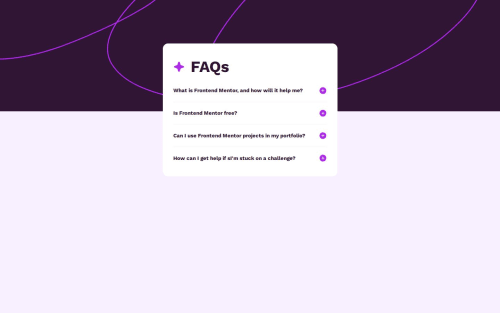FAQ-accordion-card

Please log in to post a comment
Log in with GitHubCommunity feedback
- P@hectorlil48
Hey, I checked out your FAQ accordion, and I think you did a great job with the design! I noticed you used width for the container and adjusted it with breakpoints. You might want to consider using min-width instead because it gives more flexibility. Using min-width allows the container to adapt better as the screen size increases, preventing it from being too narrow on larger screens. This can make the layout more responsive and consistent.
One other thing I noticed is that the structure would benefit from using more semantic HTML. For example, wrapping your FAQ title in a <header> tag or the accordion content inside a <main> can make the page more accessible. This helps screen readers better understand the page structure, which is especially important for users with disabilities.
Let me know if you want to chat more about it!
Join our Discord community
Join thousands of Frontend Mentor community members taking the challenges, sharing resources, helping each other, and chatting about all things front-end!
Join our Discord